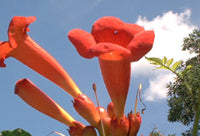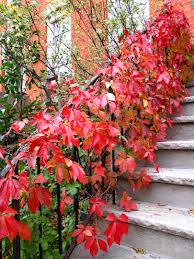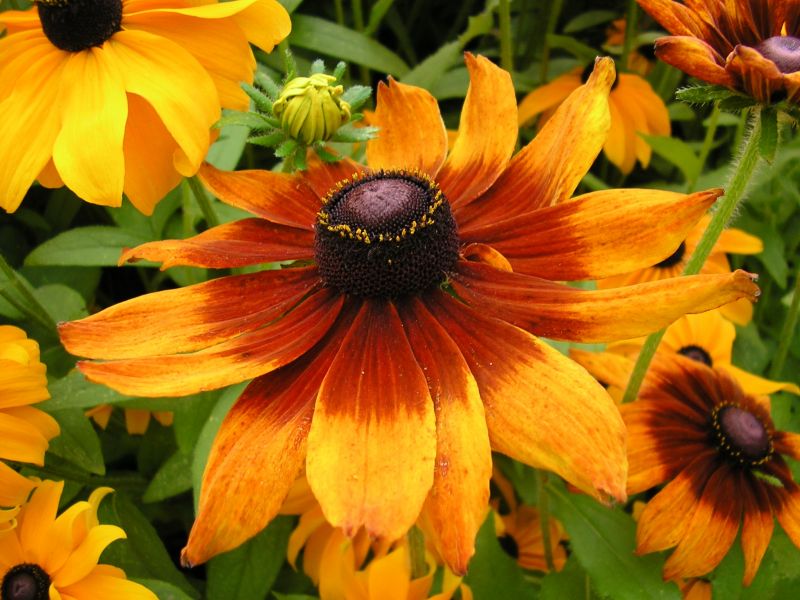If you haven’t fertilized your yard within the last few weeks, the start of the monsoon season is the time to feed for increased summer blooms. This is especially important for plants stressed by spider mites, from being wind whipped, or just plain ol’ yellow and sickly looking. It’s no secret that my favorite plant food is the one I created after years of  mountain gardening. I call it Ken’s ‘All Purpose Plant Food’ 7-4-4. It is designed specifically for gardens in the mountains of Arizona and it works better in our area than the national brands. Simply sprinkle it throughout the yard and garden and the next rain will activate the nutrients. I just had the pros at the nursery fertilize every tree we have in stock. The trees were looking pale and obviously needed a nutritious pick-me-up. It’s been a week since they were fed my home grown organic food and they look better already.
mountain gardening. I call it Ken’s ‘All Purpose Plant Food’ 7-4-4. It is designed specifically for gardens in the mountains of Arizona and it works better in our area than the national brands. Simply sprinkle it throughout the yard and garden and the next rain will activate the nutrients. I just had the pros at the nursery fertilize every tree we have in stock. The trees were looking pale and obviously needed a nutritious pick-me-up. It’s been a week since they were fed my home grown organic food and they look better already.
To increase root growth and help stabilize stressed out plants there is an additional step to proper garden health. At the same time the ‘All Purpose Plant Food’ is applied, also administer a good strong dose of ‘Soil Activator’. It is easy to use and guaranteed to increase root mass in summer. This is very important for those newly planted in the garden, for the pale and sick, or for plants under attack by grubs, mites, and aphids. Increased root mass can only help plants’ development, especially in the herb and vegetable gardens. Soil Activator increases root mass while other plant food increases foliage and flower mass. This dynamic duo can bring just about any plant back to life.
~~ ~~ ~~ ~~ ~~ ~~ ~~
 Have you noticed a spectacular orange-to-red flower blooming on lush green vines? These are trumpet vines, Campsis radicans, perennial bloomers that have brightened our area for a long time. The plant is rather unassuming most of the year but its sudden show of such large bright flowers is breathtaking. Right into fall the vine is covered with dozens of the four-inch wide, vase-shaped flowers. Hummingbirds will snack on the blossoms even after the entire plant turns its brilliant shades of autumn gold.
Have you noticed a spectacular orange-to-red flower blooming on lush green vines? These are trumpet vines, Campsis radicans, perennial bloomers that have brightened our area for a long time. The plant is rather unassuming most of the year but its sudden show of such large bright flowers is breathtaking. Right into fall the vine is covered with dozens of the four-inch wide, vase-shaped flowers. Hummingbirds will snack on the blossoms even after the entire plant turns its brilliant shades of autumn gold.
For the best color, trumpet vines like at least six hours of sun. However, good drainage is the key to exceptional growth and the brightest colors. When planted in a wide hole then filled in with heavily mulched native soil, a trumpet vine will thrive. Once established, this plant is a moderate to low water user.
Around town there are large specimens of trumpet vines that have grown to about 12 feet high by 12 feet wide. However, many of my customers easily keep this vine pruned to a lower height. When a trumpet vine is happy you can expect it to grow six feet or more in a year. If you have a yard with erosion issues, keep in mind that this plant is great at retaining soil.
Another vine that can address erosion control, provide privacy screening, or fence covers is the hardy kiwi vine. That’s right, the kiwi vine. Although this lush green vine really puts on edible kiwi fruits, I think the plant is valuable for the beauty of the vine, with leaves that look much like the outer skin of the kiwi fruit. This vine grows profusely when it has something to climb. Kiwi vines are self-fertile so you only need one to produce fruit, but the more vines you grow the more scrumptious fruits you’ll have to enjoy. Each plant easily will cover a six-foot high fence and will spread to a width of about eight feet.
 When asked about vines for erosion control I always suggest the Virginia creeper. Although native to the state of Virginia, I have seen this vine growing wild throughout the Bradshaw mountain range. Its strong, steady growth can easily cover a hillside. In fall Virginia creepers have a striking red color that rivals that of maple and burning bush. It’s beautiful, drought hardy, and easy to grow; now, that’s some vine!
When asked about vines for erosion control I always suggest the Virginia creeper. Although native to the state of Virginia, I have seen this vine growing wild throughout the Bradshaw mountain range. Its strong, steady growth can easily cover a hillside. In fall Virginia creepers have a striking red color that rivals that of maple and burning bush. It’s beautiful, drought hardy, and easy to grow; now, that’s some vine!
The additional cloud cover offered plants during the monsoon rains makes this the ideal time to plant vines. This goes for fruit vines like grapes and berries and for the tropical-looking trumpets and honeysuckles. The increased humidity with occasional afternoon rain nurtures a pronounced increase of planting successes. I have found that, unique to the mountains of Arizona, my summer plantings are more successful than vines planted in spring. Truly, it pays off to wait for the first rains of July.
~~ ~~ ~~ ~~ ~~ ~~ ~~
 Gardening Class – “The most Successful Summer Bloomers” is the label of this Saturday’s class for local gardeners, especially those new to our area. If weeds and bugs have been issues in your garden, mark your calendar for the July 20th class. I will be the instructor for that session entitled, ”Weeds & Bugs in the Garden? NO PROBLEM!”. All of our classes are held on Saturdays, beginning promptly at 9: 30 a.m.. They are fun, and full of useful information. You will learn many of the tips and tricks for cultivating successful local gardens.
Gardening Class – “The most Successful Summer Bloomers” is the label of this Saturday’s class for local gardeners, especially those new to our area. If weeds and bugs have been issues in your garden, mark your calendar for the July 20th class. I will be the instructor for that session entitled, ”Weeds & Bugs in the Garden? NO PROBLEM!”. All of our classes are held on Saturdays, beginning promptly at 9: 30 a.m.. They are fun, and full of useful information. You will learn many of the tips and tricks for cultivating successful local gardens.
Until next week, I’ll see you in the garden center.


So far this year monsoon has been a bust. Heat, humidity, clouds, thunder, but very little rain.